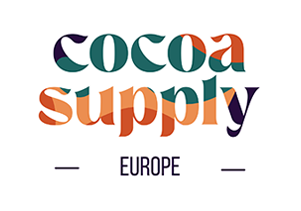**Please note this is our European site. For US and Canadian regulations, click here.
Starting any small business is stressful, and knowing what licensing and certifications you will need to acquire to begin operations can be confusing.
Opening food-based businesses like bakeries and juice bars can become a lot more complex because now you are dealing with food hygiene practices and various food licenses.
Continue reading to learn more about the necessary certifications, food licenses, and food import regulations that you will need to start a food business with cacao.
European Union Business Regulations
As a European Union citizen, you can open your own business anywhere in the EU or establish a subsidiary of a currently operating company that exists within at least one EU country already. There are no regulations explicitly required by the EU to start a food-based business.
You would have to search the rules and regulations specific to the EU-based country you are interested in operating your business.
If you are looking to start a food-based business in an EU country from outside of it again, you will have to check with the governing bodies within the country that you want to start your business in.
Check with the Points of Single Contact through the EU that will direct you to all the appropriate licensing and certification requirements necessary to start a business in any country within the EU.
International Regulatory Bodies
As your business grows, you might begin exploring sharing your cacao-based products with an international customer base. This will require a new set of standard requirements and governing bodies to contend with but is equally as important when dealing with global food production, manufacturing, and distribution.
They are:
Hazard Analysis Critical Control Point (HACCP)
HACCP is a method of managing food safety from the raw material production, procurement, and handling stages to manufacturing, distribution, and consumption. This is done by controlling and analyzing biological, chemical, and physical hazards.
It uses seven basic principles to identify, evaluate, and control food safety hazards. Those seven principles are:
- Conduct an analysis of the hazard.
This allows you to create a list of hazards that are so severe that there is a reasonable likelihood that they could cause injury, illness, or even death. Once you have established the risks, you can then identify appropriate control measures.
- Establish the Critical Control Points (CCP)
The point where applying controls becomes essential to the reduction, prevention, or elimination of specific food safety hazards is a CCP.
- Determine critical limits
A critical limit is a value of a maximum and minimum limits of control applied to hazards to reduce, eliminate or prevent the food safety hazard to a safe level.
- Create monitoring procedures
Plan a sequence of planned measurements or observations to ensure a CPP retains control and create an accurate record to use to measure future variables.
- Implement corrective actions
When levels deviate from established critical limits, corrective actions must be taken to prevent potentially hazardous food from reaching consumers.
- Establish verification procedures
Verification further verifies the validity of your HACCP plan.
- Implement documentation and record-keeping procedures.
As part of the records being maintained as part of your HACCP plan, your file should include the following:
- Hazard analysis summary
- The HACCP plan
- HACCP team and assigned responsabilities
- Description of the food, its distribution, intended use, and consumer.
- Verified flow diagram
- HACCP Plan Summary Table:
- Steps that are CCPs
- Hazard(s) of concern.
- Critical limits
- Monitoring
- Corrective actions
- Verification procedures and schedule
- Record-keeping procedures
- Support documentation such as validation records.
- Records that are generated during the operation of the plan.
If you are processing foods at any level in your business, you need to be familiar with HACCP. Even though it was established in the USA, it has become the international standard for food safety hazard control and management.
Good Manufacturing Practices (GMP)
The GMP was established to regulate food manufacturers and hold them to the same standard of sanitation methods across the board. It is a written sanitation program that indicates that food manufacturing activities be conducted in a space free of contamination by another product or the environment. It's simply another measure to ensure that all food items being issued to consumers are safe for public consumption.
There are few GMPs to incorporate into your current food safety plan that will allow your business to comply with FDA recommendations. They are:
- Food processing facilities should have the proper layout, maintenance, and operation.
- Equipment and utensils must be properly maintained
- Establish sanitation processes and controls that ensure food stays safe and suitable for consumption.
- Protection from chemical, physical, and microbial contaminants.
- Observation of critical control points like PH levels, temperature, humidity, time, and flow rate.
- Protection from natural defects like pests or mold
- Prevention of foreign materials contaminating the final product.
While these are some excellent overarching guidelines to help create an effective food safety plan, GMPs can be looked at in another way. You can break GMPs down into five main categories.
People
The key to a strong GMP plan is your people. If the people manufacturing your products aren't adequately trained in safe food handling practices, they can't be expected to execute safe food handling practices. That's why it's vital that, as a food business, you invest in an employee training program that is ongoing and ever-changing with evolving industry standards. For employees to learn about GMP and how to properly execute the functions of their job under GMPs.
- Premises
In a food manufacturing facility, it’s essential to have safe and clean premises, especially on surfaces that may come into contact with food. These facilities are usually designed in a way that allows for optimal cleaning and a reduced risk of cross-contamination. Everything, including the machines, are in good working order and on routine maintenance schedules.
Processes
GMP paperwork processes refer to the documentation that acts as proof that procedures are being followed. Auditors will refer to this documentation to check your facility and ensure GMP practices are being carried out correctly and effectively. While this used to mean binders and boxes filled with paperwork, these days, you can get your facility in cohesion with your GMPs with plant management software. This can simplify your operations at all levels, like having training programs on sanitation and food hygiene practices available at your employees' fingertips or conducting electronic food safety checks.
Products and Primary Materials
A vital element of the food manufacturing process is the primary materials you work with and the products you make. The primary materials are the raw elements that you work with, like the cacao beans chocolatiers or bakeries use to make chocolate. That chocolate then gets used to make the final product; chocolate truffles or cakes.
Procedures
For a successful GMP program, it's crucial to incorporate a method to monitor, update, and successfully implement procedures as your business matures.
When you are building an effective GMP management program, it's crucial to its success to consider how each of these five elements impacts the standards you are setting. When establishing a procedure, always ensure you think of how to train your people, what premises are needed to execute, what are the steps to get it done, what will we use and what will we create, and finally, we must never forget to be analyzing this and all processes constantly.
ISO 22000
The International Standardization Organization, or ISO, is another internationally recognized, non-government federation of national standard bodies that are recognized in over 160 countries.
ISO 22000 is a system to manage safe food handling with the overall objective of improving food safety performance by certifying employees with food safety practices.
Benefits of ISO 22000 Certification Food Safety Management
When you become ISO 22000 certified, you display your commitment to food safety, your consumers, and your employees. You will also integrate reputable and widely accepted food safety management processes into your business, building transparency, strengthening risk management controls, and increasing accountability.
Here are some more benefits to receiving your ISO 22000 Certification.
- Integrate internationally recognized food safety management processes into your organization.
- Risk management controls are strengthened.
- Consumers, stakeholders, and suppliers are confident in your ability to reduce, eliminate, and prevent risk.
- Clarify responsibilities in your organization with improved transparency and accountability.
- Continuous optimization and updating of your systems so they remain relevant and practical.
- Your management team will feel reassured by your commitment to food safety and the all-encompassing approach to standardizing practices across the supply chain.
- Your entire supply chain has rigid controls preventing contamination by hazardous materials.
Having your ISO 22000 certification is just one more step to showing your consumers that you care about food safety and their health. This helps people build trust in your brand when you try to show how dedicated you are to identifying and eliminating food safety hazards.
Food Safety System Certification (FSSC)
Like ISO 22000, FSSC is an internationally recognized body that sets standards around food safety. Unlike ISO 22000, the FSSC is recognized by the Global Food Safety Initiative (GFSI). The GFSI recognition establishes that FSSC meets the highest global standards and is accepted internationally.
To receive ISO 22000 certification, three steps need to be taken.
- Learn - All about the relevant requirements to apply
- Prepare - Contact a licensed certification body and arrange to have an audit conducted.
- Certification - Once the audit has been successful, the certification body will register your certificate.
Aso, just like ISO 22000, there are many benefits to attaining your FSSC, such as:
- Protect your entire supply chain from risk with an internationally recognized certification
- You receive the full recognition and support of the GFSI
- FSSC delivers consistent audits by qualified auditors, monitored and verified by licensed certification bodies.
- Add an optional quality management system certification
- Allows you the platform to integrate food safety and other risk management systems.
- Compliance with all statutory and regulatory requirements.
Of all the governing bodies and various food safety certifications you can get, the FSSC is one of the most widely recognized and highly regarded in the food safety industry.
Whether you are exploring a cacao-based business abroad or right in your own backyard CocoaSupply has support and education to all our customers, because we believe that small businesses can support each other and create a mutual beneficial community.
CocoaSupply is dedicated to helping business owners who offer cocoa-based products meet all the necessary standards for selling their products worldwide. Family-owned and operated CocoaSupply imports and distributes quality cocoa products worldwide while ensuring cacao suppliers are ethical, sustainable, and safe.

